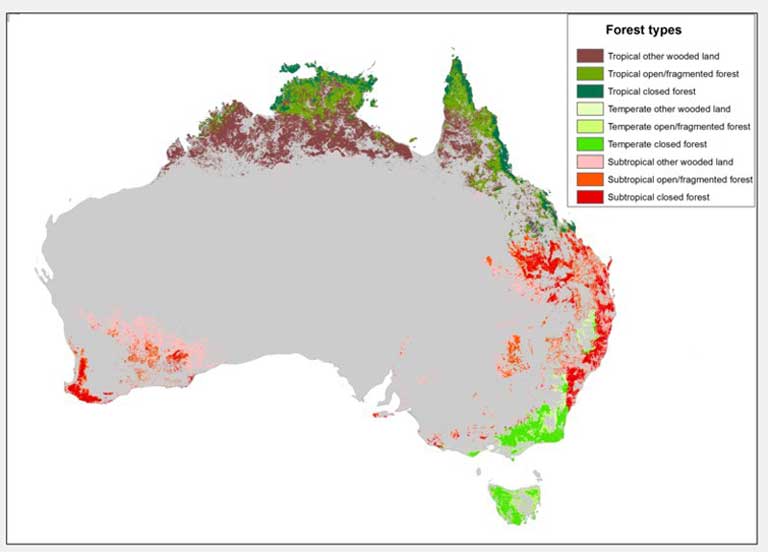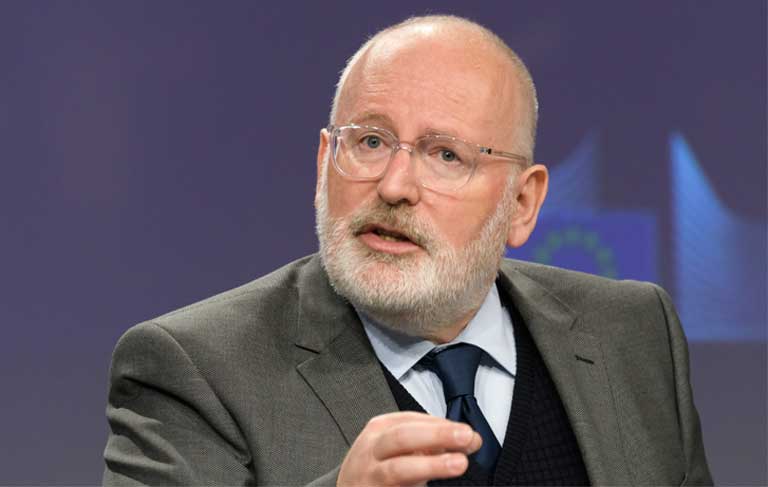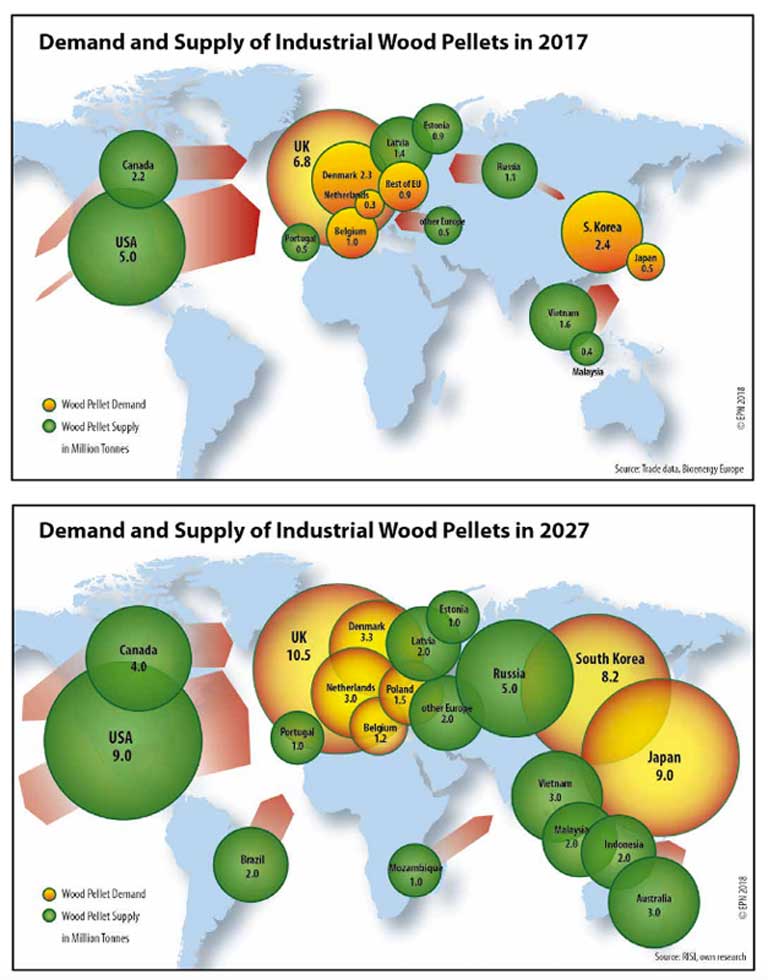- On December 15, Australia became the first major economy worldwide to reverse itself on its renewable classification for woody biomass burned to make energy. Under the nation’s new policy, wood harvested from native forests and burned to produce energy cannot be classified as a renewable energy source.
- That decision comes as the U.S., Canada, Eastern Europe, Vietnam and other forest nations continue gearing up to harvest their woodlands to make massive amounts of wood pellets, in order to supply biomass-fired power plants in the UK, EU, Japan, South Korea and elsewhere.
- In the EU, forest advocates continue with last-ditch lobbying efforts to have woody biomass stripped of its renewable energy designation, and end the ongoing practice of providing large subsidies to the biomass industry for wood pellets.
- Science has found that biomass burning releases more carbon dioxide emissions per unit of energy produced than coal. Australia’s decision, and the EU’s continued commitment to biomass, creates a conundrum for policymakers: How can major economies have different definitions of renewable energy when it comes to biomass?
Forest advocates in Australia — the world’s 13th largest economy — say they scored a major environmental victory on December 15 when the ruling Labor Party revised a key regulation, rejecting the renewable energy classification of wood harvested from native forests and burned to make energy. Previously, under the country’s renewable energy policy, woody biomass had been classified as a renewable energy source.
The impact of this regulatory change is perhaps most significant for the setback it may pose to the biomass industry globally, hindering the multibillion-dollar wood pellet industry from getting started Down Under at a time when pellet production is rising in the U.S. Southeast and British Columbia in order to supply growing demand to the EU, UK and Asia.
“The changes [in Australia] mean that native forest biomass is no longer considered an ‘eligible renewable energy source’ for the purposes of [the nation’s] Renewable Energy Target, and electricity it generates cannot be used to create tradable Large-scale Generation Certificates [for replacing coal],” Chris Bowen, Australia’s minister of climate change and energy, said in a statement. “We have listened to the community and acted to address their concerns.”
Australia, by its decision, is taking a very different course than the European Union, where woody biomass — despite growing public opposition — remains defined as a renewable energy source, is heavily government subsidized as a result, and makes up 60% of the EU’s renewable energy mix. Australia is among the few G20 countries without a thriving biomass industry; at present it neither produces nor burns wood pellets at any scale.
But that situation was poised to change, according to Virginia Young, a forest advocate with Wilderness Australia, an NGO.
“Two big power stations in Queensland were on the verge of converting from coal to biomass,” Young told Mongabay in an interview from Montreal, where she was attending the United Nations COP15 biodiversity conference. “There are [coal] plants in Victoria and New South Wales that were looking to convert. They were talking with Drax [the world’s largest consumer of wood pellets for energy based in the United Kingdom] about how to make it happen. All this was about to start.”
But without the renewable designation, biomass development in Australia is all but dead in the water.
See related: The Netherlands to stop paying subsidies to ‘untruthful’ biomass firms

Part of the policy change appears to be driven by the new government of Prime Minister Anthony Albanese, which is intent on quickly hitting its 43% carbon emissions reduction target by 2030, meeting its Paris Agreement pledge. Young said that when forest advocates recognized the short timetable available for accomplishing that commitment, they “flew into action” to lobby intensely for the renewable energy policy change.
Scientists note that it requires many decades for woody biomass to qualify as a renewable energy source and truly help a nation achieve its net zero carbon emissions goals; that’s because it takes a decades for the carbon released into the atmosphere from burned trees to be reabsorbed by newly planted, slow-growing replacement trees.

“This is a big win for the community, who want the electricity sector decarbonized as quickly as possible and do not want to see native forests logged to enable coal-fired generators to switch to burning forests instead of coal,” Bob Debus, chairman of Wilderness Australia, an NGO, said in a statement.
Australia’s reluctance to embrace woody biomass has led it to invest more heavily in zero-carbon renewable energy.
In 2021, 29% of Australia’s total energy mix came from renewables such as solar, wind and hydro; just 1% came from burning biogas and nonwoody biomass. By comparison, the 27-country EU got 22% of its total energy mix from what it calls renewables in 2020. But when wood pellets are removed from that calculation, the EU’s zero-carbon renewables are closer to 9% of total energy.

Protecting what’s left
About 125 million hectares (309 million acres) of native forests cover Australia today, or about 16% of its land base; that represents the world’s seventh-largest forested area. Advocates have been keen to protect these forests, especially after years of drought and record-shattering wildfires devastated the country’s biodiversity; Australia has suffered the highest rate of mammal extinctions in the world.
Peg Putt, coordinator for forests, climate and biomass at Australia’s Environmental Paper Network, told Mongabay that Australian utilities eager to convert to wood pellets prior to the policy change were told by forest advocates that “the government may award you renewable energy certificates, but we’ll give you dead koala certificates.”
The campaign turned public opinion against biomass, leading the Australian government to steer clear of wood pellets, even as Japan and South Korea rapidly transition to biomass energy, sometimes even approving power generation using coal and biomass co-firing — helping keep the coal industry thriving. This year coal is set to achieve its highest production levels ever, even as the cost of severe climate change disasters skyrockets.
As for timber demand, Australia gets about 85% of its needs domestically from tree plantations that long ago replaced natural forests. While it still exports some pulp and wood chips, most of the country’s wood supply stays home to meet timber demand. Technically, under the new rules, Australian plantation wood could be grown for wood pellets, but that’s not an immediate concern, say forest advocates.
The government decision is a small but significant blow to the wood pellet industry’s plans for nonstop global expansion. In 2011, industry advocates noted that although Australia’s biomass industry was “slow to develop,” it had potential. “Wood waste” was deemed one of the country’s “most underutilized resources” and would likely remain so without government subsidies — which never materialized.

Will Europe pay heed?
News of Australia’s decision quickly reached forest advocates and policymakers in Brussels, where EU officials are finalizing revisions to their Renewable Energy Directive (RED). While some new protections for native forests are included in RED, as well as some new limits on biomass burning, wood pellets retain their definition as a renewable energy source on par with zero-carbon solar and wind energy. And large biomass subsidies continue being paid for wood pellet burning.
“Europe can no longer claim global leadership on renewable energy transition while such a large proportion of its so-called renewable energy is burning forests,” Putt said. “Now the EU has a world-leading example of genuine policy reform that shows the way.
“Forest biomass is not renewable and its use for large-scale energy [production] should not be subsidized. It is vital to avoid the release of large carbon stores to the atmosphere that occurs with burning forest for power and heat, and [it’s] equally important to avoid unacceptable impact on forest biodiversity. The world has to go beyond burning and adopt genuine low-emission renewables.”
The EU spends more than $18 billion annually subsidizing bioenergy with most of that money going to woody biomass. The UK spends over $1 billion annually subsidizing wood-burning at Drax.
Forest advocates in Europe, who hope for the kind of success their counterparts in Australia have had, continue to press their case in Brussels so long as EU negotiations over biomass regulations are still ongoing.

“The latest decision from Australia make it clear that important countries outside Europe are now also drawing the line and thus sending a clear message to Frans Timmermans [vice president of the EU Commission and staunch biomass supporter]: combustion of woody biomass, regardless of sustainability criteria, is not renewable and does not belong on the list of subsidized renewable energy,” Fenna Swart and Maarten Visschers, forest advocates with the Clean Air Committee in The Netherlands, told Mongabay.
At present, as EU negotiations conclude, it seems doubtful further limits on biomass usage and subsides will be added to RED, nor is the renewable energy designation likely to change.
As Timmermans has said many times, Europe cannot meet its mandate to phase out coal by 2030 without a heavy reliance on forest biomass — even though science shows that biomass burning releases more carbon emissions per unit of energy produced than coal, even as wood burning destroys biodiversity and important carbon sinks for decades during a rapidly escalating climate crisis.

Disappointing and confounding
Nootje Beckers, a spokesman for Rob Jetten, The Netherlands’ minister for climate and energy policy, told Mongabay that his country took the unilateral step in April 2022 of stopping subsidies for new biomass power plants (though existing plants still receive subsidies), and “presented a sustainability framework to ensure that the deployment of biomass is done responsibly and carefully.”
Regarding RED end-stage negotiations, Beckers said that The Netherlands is committed to “raising the level of ambition,” but that “the [European] Council already established a negotiated [biomass] mandate in the summer [and that] individual member states have limited influence at this stage.”
Given EU rules, each individual country holds a veto over any changes now. Heavily wooded Sweden and Finland are on record supporting biomass harvesting and burning.
All of which is disappointing and confounding to forest advocates in Europe and Australia.
“It’s hard to believe, as the world spirals into a climate and biodiversity emergency,” said Bob Debus of Wilderness Australia, “that anyone would think that logging precious native forests to burn them for electricity is anything but an assault on nature and the climate.”
Justin Catanoso is a regular contributor to Mongabay and a professor of journalism at Wake Forest University in the United States.
Banner image: Tiny wood pellets like these are at the center of a flaring global controversy as to whether burning forest biomass to make energy should be classified as a renewable energy source. Image courtesy of D-Kuru/Wikimedia Commons Creative Commons Attribution-Share Alike 3.0 Austrialicense.
Related audio from Mongabay’s podcast: A discussion with reporter Justin Catanoso about biomass as a false solution to the global climate crisis, listen here:
Related reading:
The Netherlands to stop paying subsidies to ‘untruthful’ biomass firms
FEEDBACK: Use this form to send a message to the author of this post. If you want to post a public comment, you can do that at the bottom of the page.
